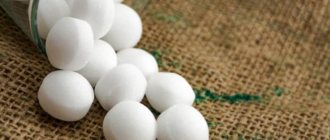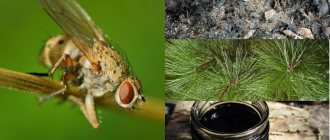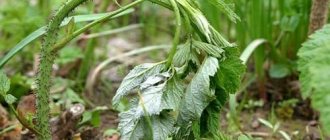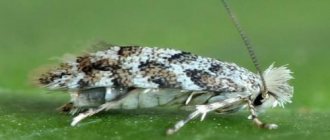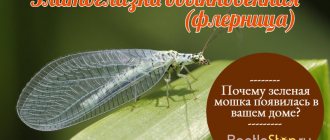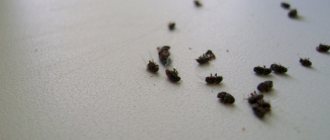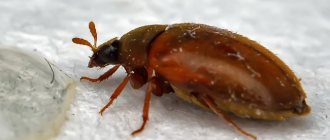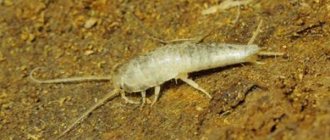Almost every gardener tries to grow onions on his plot. However, many of them experience onion rot long before harvest. And the reason for this is the onion fly, which damages the vegetable at all stages of its development, as well as when storing it at home. Yellowed and drooping onion feathers on a vegetable in the garden are the first signs of a pest. To preserve the harvest, you need to immediately begin to destroy it. But we must also not forget about preventive measures.
What does an onion fly look like, photo
This is a dangerous pest of onions, affecting many bulbous crops - shallots, leeks, chives, garlic, tulips, etc. If it appears on the site and does not start control in a timely manner, you can lose most of the harvest.
The onion fly is a gray-ashy insect up to 1 cm long. In appearance it is similar to a regular housefly. The larvae are oblong, whitish. This is what the fly and its larvae look like in the photo.
Description and life cycle
The onion fly is small in size and looks very similar to an ordinary house insect.
The body of the pest reaches 6 mm, the color is most often gray with a slight faded green tint. Therefore, the pest is practically invisible on the plant. Eyes are red or burgundy. The insect appears in the beds at the end of April, mid-May, depending on weather conditions. The female can lay up to 15 eggs at a time, from which larvae appear after 3-4 days. Externally, the larvae are white and small in size. The larvae feed on young onion shoots and can sometimes accumulate in large numbers in the bulbs. After 10-12 days they pupate and fall into the soil for several weeks. After this time, new adults appear and spread throughout the area.
Appearance and life cycle
The onion fly is an inconspicuous, small (about 7 mm) insect of ash-gray or yellow-gray color. The pest belongs to the order Diptera and is very similar to the common housefly. The wings are transparent and may have two or three longitudinal veins or without them. At the edges of the wings there is a fringe of thin long hairs.
The onion fly is a small insect (7 mm), very similar in appearance to an ordinary housefly
The female lays from 40 to 60 eggs during her life, and from 5 to 20 at a time. Their size is about 1 mm. The eggs are white and have an elongated oval shape. Embryonic development is promoted by high soil moisture (60–80%). After about a week, larvae up to 10 mm in size emerge from them, which immediately penetrate into the bulb. They are legless and white. The body tapers towards the head, which has black mouth hooks. Larvae born from the same clutch stick together and eat away a single cavity inside the bulb.
The fly lays from 5 to 20 eggs at a time, from which, after a week, larvae hatch, which eat the bulbs and feathers
After 15–20 days, the larvae leave the bulbs, crawl into the ground and pupate there, forming a false cocoon. After 2–3 weeks, young flies of the next generation emerge from the pupae. This usually happens in July. In total, two generations of onion fly develop during the season; in the southern regions, under favorable conditions, a third generation may appear. The pest overwinters in the soil of those areas where the larvae developed, at a depth of 5–20 cm in the form of false cocoons.
The onion fly overwinters in the soil at a depth of 5–20 cm in the form of a pupa (false cocoon)
What harm does the onion fly cause?
The period of appearance of the onion fly depends on climatic conditions and varies in different regions from late April to early June. The main landmark for the beginning of the mass emergence of the pest is the moment of flowering of dandelions, lilacs and cherries.
As soon as the cherry blossoms, the gardener must be on alert - the massive flight of the onion fly begins
Adult flies do not eat onions; they feed on pollen from flowering plants. Their harm lies in the fact that females actively lay eggs during the season in the soil, on protruding parts of the bulbs or between the leaves. Fly larvae cause direct harm. They attack onions of the first and second years of development. In seedlings, the larvae damage the feathers. In onions of the second year of growing season, they crawl through the axils of the leaves into the bulb or penetrate it from the bottom, suck out the juice and eat away the pulp, as a result of which the bulbs rot and the plants die.
Causes of defeat
The fight against onion flies that have already appeared can be quite difficult and not always successful. To carry out timely and correct preventive measures, it is necessary to know the reasons for the mass invasion of the pest on onion beds. Among them are:
- violation of crop rotation rules;
- incorrect placement of crops in the garden (poor choice of neighbors);
- late planting of onions;
- lack of deep autumn digging of the soil;
- use of infected and untreated seed material before planting.
How does plant infection occur?
The insect's flight begins in the spring during the flowering of lilacs and dandelions, and lasts about 2 weeks. This period falls on the second half of May. The female lays 40-60 eggs during her life.
Soon after emergence, the female looks for a place to lay eggs. Eggs are laid at the base of the bulb, under the first dry scales, between the leaves or on the soil near the plant. Eggs mature within 3-8 days depending on weather conditions.
The hatched larvae continue to stick together. Immediately after birth, they bite into the flesh of the bottom and feed, scraping out the fleshy scales of the young onion. The insect remains in this stage for approximately 3 weeks. Baby flies are highly voracious and are able to eat not only multiple passages inside the bulb, but also large cavities.
Having eaten their fill, the larvae go into the ground next to the damaged bulb, pupate and form in this shelter for another twenty days. During this period, they already have the rudiments of wings. And in June, the flight of the second generation of flies begins, the larvae of which damage bulbous plants of late planting dates. In the southern regions, the onion fly can have 3 generations over the summer.
Only pupae overwinter, burrowing into the ground to a depth of 5-20 cm. And in May the cycle begins anew.
Harm caused
Larvae mainly cause damage to plants. More than 50 individuals can inhabit one bulb at the same time. They damage not only onions and garlic, but also the bulbs of tulips, daffodils and other plants. They eat away the juicy core, after which the flower leaves turn yellow and fall off, and the tips on the onion feathers dry out, and an unpleasant smell of rotten plants is felt throughout the garden bed. The damaged areas are open to various fungal and bacterial infections. As a result of poor nutrition, the entire crop dies.
The larvae are a threat to all ornamental and vegetable bulbous plants
The insect causes the greatest damage to plants grown on sandy and loamy soils, and less damage to peat bogs. You should try to get rid of emerging insects immediately when the first generation of pests appears - in June, this will significantly increase the chance of preserving the harvest.
How to deal with onion fly
Agrotechnical measures
If you had problems with growing onions last season due to a pest fly, then take the following preventive measures in the coming season.
- Most likely, there are fly pupae left in the soil, so as soon as the snow melts, the bed is dug up so that the pupae are exposed to the cold air and freeze out.
- Early planting of onions in the ground. Don’t be afraid that your bow will freeze and go into the arrow. By planting the bulbs 3 cm deeper into the soil, they will survive frosts just fine, but the onions will get stronger faster and then they will no longer be afraid of the pest. Subsequently, as the bulb grows, it will appear on the surface.
- After planting the bulbs, mulch the soil with peat or humus. Mulch will provide additional nutrition and prevent insects from laying eggs.
- Maintain crop rotation. Do not plant onions in the same place where they were grown last season.
- The onion fly does not like the smell of carrots, so many gardeners alternate rows of onions with rows of carrots. And plant marigolds along the edges of the bed; insects cannot stand their smell either.
- Remove weeds from the garden bed in a timely manner and do not throw away various organic residues. Loosen the row spacing every 3-4 days: the insect never lays eggs in loose soil.
What to do if you notice signs of onion fly
As soon as you notice slow growth of the bulbs, yellowed feathers and an unpleasant odor from damaged bulbs, immediately begin the fight if you do not want to lose most of the harvest by autumn.
First, remove mercilessly and destroy the affected bulbs; they can no longer be saved. They should not be thrown into the compost heap. Secondly, use folk remedies to combat the pest; after all, they are more environmentally friendly and are always at hand. If success is not achieved with the help of folk remedies, you will have to resort to insecticides - chemicals. However, remember that after using insecticides, harvesting is carried out no earlier than 20 days later.
Folk remedies
Traditional methods of combating onion fly are carried out both for the purpose of prevention and when the first signs are detected. Treatment begins from the moment the leaf grows to a height of 3-5 cm.
- Salt . 3 tbsp. l. salts are diluted in 10 liters of water. The resulting solution is watered from a watering can or under the root once every 7-10 days. If you watered from a watering can, after a few minutes, water the plants with clean water to wash off any remaining salt from the leaves. You can do things a little differently. Before it rains, I sprinkle a pack of salt on a bed about 10 meters long. Rain will dissolve the salt, the effect will be the same as that of the solution.
- Ammonia is diluted at the rate of 3 tbsp. l. per 10 liters of water, water once a week. Be careful: the ammonia solution should not get on the leaves, so water only at the root of the plant. And remember that ammonia acts as a nitrogen fertilizer, so it is used only until mid-June.
- Birch tar, you can buy it at a pharmacy or any specialty store. 1 tbsp. l. tar is diluted in 10 liters of water. The fly really doesn't like the smell of tar. The bulbs are soaked in this solution before planting, and the soil is watered after planting. In rainy summers, the treatment is carried out 2-3 times, pouring the tar solution between the rows.
- Soap solution. 50 g of laundry soap is soaked in shavings on a grater, diluted in 10 liters of warm water, stirred until the soap dissolves, and then poured over the onions.
- Dandelion decoction. 200 g of washed and crushed dandelion roots are poured with hot water and left for several hours. Then the broth is diluted in a bucket of water and watered. A similar decoction can be prepared from wormwood and hot pepper.
- Wood ash. Every 2 weeks, sprinkle the onion rows with dry ash. In addition to preventing the fly from laying eggs, the plant will receive good potassium fertilizer.
- Pine needles are used as an excellent mulch and also repel pests. You can use not only fresh pine needles, but also pine litter. Conifer needles are used to mulch onion plantings immediately after the first shoots appear.
Prevention. How can you protect your onion?
The task of any preventive measures in relation to insect pests is to create conditions for them in which they simply cannot live, and, therefore, reproduce. The first thing to do is, of course, to study the quality of the planting material. Always plant only whole, undamaged bulbs. Bulbs, even with small traces of rot, should not be planted; they are simply discarded.
After selecting healthy bulbs, you still need to process them before you plant them. There are two ways to do this:
- In the first case, pour hot water (about 50 degrees), into which the bulbs are dipped for about 15 minutes. Next, they are simply dried and then planted.
- The second option involves the use of potassium permanganate. One gram of it will be enough per liter of water. There the onions are kept twice as long, that is, for 30 minutes. After this, they are dried again and then planted.
But in this video they will show you another way to process onion sets.
Before planting, you should always treat the bulbs, otherwise it will not grow large. But many people don’t do this. As a result, productivity suffers greatly.
What else can you do?
In the fall, don’t be lazy and dig up the soil deeply for future beds. After all, in winter, the onion fly (more precisely, its larvae) always hide in the ground. The depth of their habitat can be up to 20 centimeters. So, if in the fall you lift them to the surface while digging, they will simply freeze, and this can happen even during the first frost. In addition, you should not leave any residues from the previous harvest on the beds. The onion fly will definitely use them for its reproduction.
In the spring, you can use a number of drugs to prevent the onion fly from appearing. For example, "Bazudin". It (30 grams) is simply mixed with half a liter jar of sand (or sawdust), and this simple mixture is poured into the ground. The end of spring is the best time to use this drug.
There are, of course, other drugs that are also effective against this type of fly. You can buy “Mukhoed”, “Teradox”, “Diazinon”, “Muravyin”, “Medvetox” with “Dachnik” is also suitable. But, when growing onions exclusively for greens, some of these drugs simply cannot be used. You should definitely take preventive measures, then perhaps you won’t have to fight and get rid of the onion fly in the summer.
And here is another useful video where they will tell you about the use of folk remedies in the fight against onion flies. Let's see.
How to fight onion flies at home
An onion fly may appear in your apartment if you grow onions for greens on a windowsill, or if you store the harvest at home in winter. The appearance of midges can occur if garden soil contaminated with pest larvae was used for cultivation. Either the infected bulbs were inadvertently planted on greenery or left for storage indoors.
Fly control measures are similar to those used in garden beds. It is better to use traditional methods, they are harmless and no less effective. At home, the use of insecticides is undesirable. They are used as a last resort and only taking precautions.
To prevent the reproduction of midges, dried bunches of tansy, wormwood, and marigolds are hung on the walls or laid out on shelves. Do not lose your vigilance, periodically check your onion supplies and remove affected bulbs in a timely manner.
If midges do appear from the onion, use bait near the place where the onion is stored. Place slices of apples, pears, tangerine or orange peels in plastic bags or in a jar closed with a lid with small holes. Midges fly to their smell. All that remains is to close the jar, tie the bag and throw it away.
The onion fly is a parasite that is distinguished by its fertility and gluttony. If you do not start a timely fight against the insect, it will quickly destroy the bulbous plants. It lays larvae inside the bulb, which quickly develop, and in the process completely eat the plant.
Therefore, before planting, you should think in advance about how to get rid of onion midges so that their appearance does not come as a surprise. The appearance of the creatures can easily be confused with an ordinary fly, but the harm from them will be much greater.
Signs of a pest presence
The larvae of adult insects suck out all the juices from the bulb and devour the pulp. After three weeks, the flies completely destroy the plant, burrow into the soil and pupate. She spends the whole winter in this state.
In the spring, the onion fly emerges from the cocoon weak, but capable of life. For a week she will feed on the nectar of dandelions or lilacs, and after another week she will reach sexual maturity. At this time, insects move to the onion beds.
The following signs will help you spot pests in a vegetable garden in time:
- The bulbs begin to rot and emit an unpleasant odor. In the section you can see the passages made by the larvae.
- The plant slows down in growth, the feathers begin to turn yellow, wither, and the tips curl inward.
- The bulb is easily pulled out of the soil with its roots; near the bottom you can see small worms, these are fly larvae.
After harvesting, you need to dig the ground deeply (to a depth of 20 cm). How can you treat soil infested with insect pests? The onion fly dies in a salty environment, so it is recommended to water the beds with a salt solution before planting the bulbs. The larvae die immediately.
How to get rid of onion fly
It is better to find out in advance what the onion fly is and how to fight it, than to suffer losses from the insect later. This is a small insect, its body length is only 7 mm, in appearance it resembles a house fly, but the body is smaller.
The color of the body is ash-gray, with a greenish tint on the back. The parasite appears in the spring during the flowering period of dandelions and fruit and berry trees. Activity continues until late autumn. Therefore, it is necessary to combat parasites from the beginning of spring until the end of the autumn season.
Onion flies are fertile. After a couple of days, larvae emerge from the eggs; they look like white worms.
They attack the bulb and eat it in a short period. Within 2 weeks, the larvae destroy the plant and transform into pupal form. And by mid-summer, adults form from them and begin to infect the crop.
The insect can destroy not only garlic and onions, but also all kinds of bulbous plants and flowers with bulbous roots. The affected plant gradually dies, it turns yellow, dries out, and the root part begins to rot and become affected by fungus. To prevent this, it is important to know how to deal with a dangerous parasite.
Folk remedies
You can use folk remedies from the beginning of insect activity until late autumn. Many of them do not have a harmful effect on plants, but all should be used with caution.
Ammonia
Every summer resident and gardener will say that fighting onion flies is a difficult task, but if you approach it responsibly, you can quickly eliminate a large number of parasites.
To destroy them, chemicals are often used; ammonia is one of the most effective ones. The drug can be purchased for pennies, but the benefits from it will be high.
When using ammonia, you should follow the following recommendations::
- For treatments, you need to prepare a solution - add 3 tablespoons of ammonia to 10 liters of water;
- If the parasite has already appeared, then the plantings should be watered with a solution at intervals of 4-5 days;
- To prevent damage to bulb larvae, this procedure is recommended to be carried out every 10-12 days.
It is important to remember that the use of ammonia will also act as a nitrogen fertilizer for plants. For this reason, these activities should be completed before mid-June.
Saline solution
If you do not know how to remove onion flies from your garden, then in this case you can use an available product - table salt. This remedy helps eliminate all parasites and larvae. But when using it, care must be taken, because excessive addition of salt to the soil can have a negative effect on the development of plants.
Chemicals
Pesticides to combat onion fly Insecticidal preparations are allowed to be used in spring, early summer, and also in late autumn after harvesting for application to the soil. With the right approach, it is possible to preserve onions and prevent infection in the next season.
The active substances are absorbed by plant tissues, kill the larvae during feeding, and flies are also destroyed by contact in the first days of treatment. The drug disrupts the functioning of the central nervous system, causing paralysis and death. It remains active in the soil from 10 days to 2 months and will save you from re-infection. The solution for watering and spraying is prepared immediately before use, in the dosage specified in the instructions.
Effective drugs:
- Aktara;
- Aktellik;
- Onion fly;
- bottom;
- Angio;
- Calypso;
- Lannat;
- On the spot.
Reasons for appearance
Fighting onion flies is a difficult task that is not always successful. For this reason, it is better to prevent the appearance of this pest in advance than to then fight it from spring to late autumn and endure the damage caused.
In order for prevention to be correct and effective, it is necessary to know the reasons for the mass appearance of the parasite, namely larvae in bulbs in beds and greenhouses.
The main causes of the appearance of the parasite include:
- Violation of crop rotation rules. This means that onions and other crops were planted in the same area for two consecutive seasons;
- Autumn digging was not carried out or the soil was dug to insufficient depth;
- Lack of proper rotation of beds on the site;
- A thorough inspection of the bulbs was not carried out before planting. This will help to promptly identify the presence of larvae and carry out thorough processing.
The onion fly is a dangerous pest that can destroy large volumes of crops in a few days.
It multiplies quickly, so when larvae are discovered, you should immediately begin an intensive fight against the parasite. Moreover, there are a lot of means that can destroy the insect and protect against repeated damage.
If you find an error, please select a piece of text and press Ctrl+Enter. We will definitely fix it, and you will get + to karma
Every housewife has seen onion gnats in the kitchen at least once in her life. These are very common insects in everyday life, which are often found in onions and a number of other products. How to get rid of onion midge, the reasons for its appearance and features of prevention will be discussed in the article.
At what temperature does a small pest die?
If onion fly larvae are in the planting material, then there is little that can save the seedlings. To protect planting material from this pest, it should be treated with potassium permanganate. Or put it in hot water for 15 minutes. The water temperature should be at least 45 or 50 degrees, which is higher than the temperature where the midge lives. It is then that the pest is able to die.
The process of fighting onion flies is not at all complicated. The main thing is to detect the pest in time and, without wasting time, begin to destroy this disease. If you do this after the very first signs appear on the plant, you can avoid crop loss.
Where do midges come from?
Despite their small size, insects can fly considerable distances, so they can end up in any apartment. They get to new housing in different ways, here are the main ones:
- Insect eggs may be present on vegetable and fruit products that were bought in a store, at the market, brought from a dacha, or taken from friends.
- It is possible that one or a couple of individuals accidentally enter through a window or door, after which they lay eggs and “start” the reproduction process.
- Pests also enter through ventilation from neighbors.
To reproduce, insects need a nutrient medium - warm, rotting foods, spilled juices, pieces of plant food lying around, used tea bags, sewerage with an abundance of plaque. Female small flies can also lay eggs on the bedding and food of pets, for example, when their cages are rarely cleaned. Midges love wet, unwashed kitchen rags and napkins.
Midges from onions breed especially well, because if stored improperly, this vegetable begins to rot quickly. Many housewives have onions in a dark, warm place, wrapped in a plastic bag, and this is an ideal condition for them to rot. Therefore, midges on onions multiply at tremendous speed, and will soon fly throughout the kitchen in dozens and hundreds.
Are they dangerous, what is their harm?
Onion midges appear in late spring. They lay eggs on young onion shoots. After 8-10 days, larvae appear and penetrate inside the bulbs for food, as a result of which they deteriorate and disappear.
In kitchens, insects spoil food lying on the surface. They lay eggs on fruits and vegetables. Winged insects are carriers of various diseases. An onion midge bite can cause a severe allergic reaction accompanied by swelling. This is especially true for people prone to allergies.
Pests lay eggs on unpackaged products, which can end up in human food. Midges stain the surface of furniture and walls. During flight, they can enter the human respiratory tract.
What to do if you find onion midges?
How to get rid of onion midges is a paramount question, and you need to start solving it by finding a place for their active reproduction. The main thing is to leave pests without food and a breeding ground for their offspring. The procedure will be as follows:
- Throw away spoiled onions, carefully sorting through all available vegetables.
- Place the onions in the refrigerator without signs of rotting or spoilage, placing them in small portions in plastic bags.
- If it is not possible to put onions and other root vegetables in the cold, they should be stored in boxes with sawdust, or, as a last resort, in well-ventilated fabric bags.
- Remove all fruits, especially citrus fruits, out of reach of midges.
- Throw out garbage on time, at first - 1-2 times a day.
- Wash dirty dishes immediately after eating.
- Limit the access of insects to water - they also need it for life. To do this, you should close all taps so that they do not drip, leave sinks dry, do not store water on the table, and thoroughly dry clean dishes.
- Remove and clean siphons a couple of times a week and use disinfectants to clean the sewer system.
- Wash your pets' cages regularly and prevent food residues from being left there.
IMPORTANT: If there are plants in the apartment, they also need to be cleaned, because insects can settle on them for lack of other food. You should reduce the frequency of watering and stop pouring tea leaves on the ground. If necessary, you can spray the flowers with a weak solution of potassium permanganate.
Tips to help you quickly get rid of onion midges:
Signs of onion fly larvae infestation
All types of bulbous plants - flowers, garlic, onions and ornamental onions, some types of salads are susceptible to attack by onion flies. In plants affected by the larvae, the tips of the leaves (onion feathers) begin to turn yellow and they stop growing, just like celery plants when infected with hogweed.
The bulbs become soft and begin to rot, and an unpleasant, putrid odor emanates from them. The plant dies.
This is important: the larvae of onion flies penetrate the bulb through the base of the leaves or the bottom.
How to make midge traps?
Onion midges sometimes multiply on such a scale that simply getting rid of rotting vegetables does not bring proper and quick results. In this case, the hostess will have to take a number of more radical measures to get rid of uninvited guests. How to make baits with your own hands where insects will die? Here are good ways:
- Take a 0.5 liter plastic disposable glass, throw a piece of fruit into the bottom or pour a little sweet juice (compote). Wrap the glass in cling film, making several small holes in it. Leave the trap in the kitchen overnight, quickly put the glass in a tight bag in the morning and take it out of the house.
- Pour juice into the bottom of the jar or put overripe fruit, cut into slices. Cover the top of the jar with a paper funnel, placing its narrow side inward. Leave the jar on the table at night, pour water into it in the morning - all the midges will die.
- Pour water into a flat plate, drop a little citrus-scented dishwashing detergent into the water. The insects will land on the water, but will no longer be able to take off.
You can also get rid of flies using medications. Nowadays, any store sells special adhesive tapes and sheets to which harmful insects quickly stick. It is not recommended to use aerosols and other chemicals, because their residues can end up on the table or in food, causing harm to humans. But ventilating the apartment and mechanically removing pests using a towel through the window, or sucking them up with a vacuum cleaner will definitely not do any harm and are perfect as one of a set of measures to combat midges.
The three most effective ways to deal with annoying midges
1 way. Industrial insecticides
In the event that general cleaning does not give the expected result, and harmful flies continue to scurry around the apartment, you, of course, can poison them with some kind of insecticidal aerosol, but the same dichlorvos, for example, is allowed to be used only in the toilet and living rooms, It is unacceptable to use such a toxic pesticide in the kitchen.
In areas where food is stored or prepared, it is better to use factory-made adhesive tapes to combat midges. Unfold and hang a couple of Velcro strips under the kitchen ceiling, and the very next day you will see that the number of small “saboteurs” secretly sneaking into your home has decreased significantly.
A fumigator can also be an excellent way to solve the problem of fly infestation. Fill this device with a special plate that acts on flies, or attach a reservoir with anti-fly liquid to it, turn on the unit all night, and in the morning you will not find a single fruit fly in your house.
Method 2. Homemade traps
Fruit flyers can be fought not only with chemicals, but also with safer, but no less effective folk remedies, which include the homemade traps described below.
Drunken trap. Flies love beer and dessert wine. Place an open, unwashed beer or liquor bottle on the kitchen counter. After a couple of hours, a large number of fruit flies will gather in it, flocking to an unexpected feast, all you have to do is plug the cap of the vessel full of midges and take it to the trash heap.
Apple trap. No less than sweet alcoholic drinks, fruit flies love apples. Taking advantage of this weakness, you can build a very effective trap, in which natural apple cider vinegar will play the role of bait. To make such a trap, take a half-liter jar, fill it a quarter full with warm water, pour a spoonful of natural apple cider vinegar into the water, the smell of which has a mesmerizing effect on midges, and add a couple of drops of shampoo or dishwashing liquid. Attracted by the aroma of your favorite fruit, the midge will fall into the water, and the “sticky” soap film formed on the surface of the liquid will not allow it to fly back up.
3 way. Repellents
If you don't have time to build traps, try scaring away unwanted guests with some kind of unpleasant smell. As such “horror stories” you can use:
- camphor, the smell of which all flies and mosquitoes really dislike. Throw a pinch of this substance into a heated dry frying pan and, as soon as its crystals begin to emit a characteristic wormwood aroma, immediately remove the vessel from the stove and walk with it throughout the apartment. Having smelled the smell of camphor, the flies will be forced to retreat.
- garlic - garden midges are afraid of the smell of this plant, so they can repel flies that have chosen flowerpots with indoor plants. Cut a few cloves of garlic into slices, place them on the surface of the substrate in flower pots, and the midges will soon leave their homes.
- cloves, the rich aroma of which plunges midges into panic. Place a dessert spoon of clove buds in a small ladle, fill them with a glass of water, and place an impromptu aroma lamp on the stove. When the liquid in the ladle begins to boil, a thick spicy spirit will spread throughout the apartment, which will disperse the “stray” guests.
How to prevent the reappearance of pests?
To prevent insects from settling in your house or apartment again, you need to take measures to repel them. Thus, onion midges cannot tolerate the smell of pine needles and basil. Therefore, you need to purchase essential oils of fir, pine, and basil, soak cotton wool in them and place them in places where vegetables are stored.
Insects do not like the smell of clove seasoning - it can be stuck into citrus fruits that are stored outside the refrigerator. Midges also react negatively to the aromas of ylang-ylang, patchouli, and verbena oils, so they can be dripped into aroma lamps and used regularly. Midges also cannot stand the smell of camphor, which, by the way, is absolutely not harmful to humans. Preventing the appearance of midges is not difficult, but it is effective, and an unpleasant neighborhood will most likely not happen to them.
See also: Methods for successfully combating onion midges
- Author: Maria Sukhorukikh
Rate this article:
- 5
- 4
- 3
- 2
- 1
(0 votes, average: 0 out of 5)
Share with your friends!
Carrot
Among gardeners, a very popular method of fighting flies is mixed planting of onions and carrots. In this case, the result is a mutually beneficial cooperation between these vegetables: the carrot with its aroma repels the onion fly, and the smell of the onion prevents the carrot fly from approaching the garden bed.
The onion fly is repelled by the aroma of carrots
I also tried planting these vegetables interspersed - there were really no pests. But I didn’t like this approach for another reason. A couple of weeks before harvesting the onions, you need to completely stop watering them so that the heads ripen in dry soil, and moisture-loving carrots could not withstand such a test.
So I improved the method a little. I also plant onions and carrots close to each other, but now I do not alternate them through a line, but divide the bed lengthwise and plant 3-4 long lines of each vegetable on each side. The effect is the same, but now I can safely continue to water the carrot half of the bed in July without fear of getting the onions wet.
